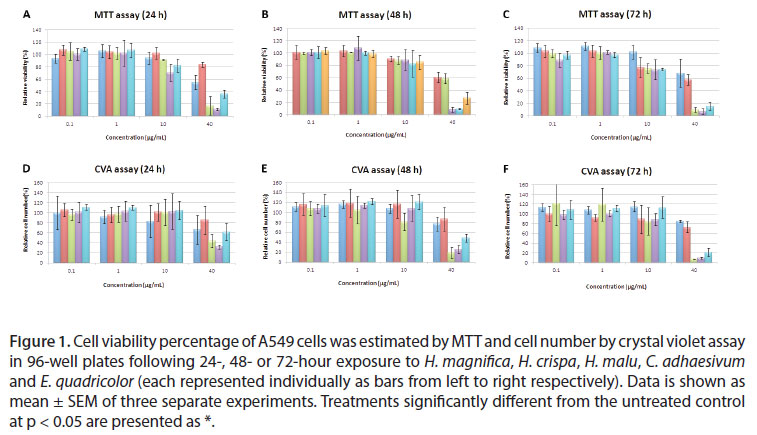Although sea anemones are well known for being rich sources of toxins, including cytolysins and neurotoxins, their venoms and toxins have been poorly studied. In the present study, the venoms from five sea anemones (Heteractis crispa, Heteractis magnifica, Heteractis malu, Cryptodendrum adhaesivum and Entacmaea quadricolor) were obtained by the milking technique, and the potential of these venoms to kill cancer cells was tested on three cell lines (A549 lung cancer, T47D breast cancer and A431 skin cancer). The total protein level in the crude extract was determined by the bicinchoninic acid (BCA) protein assay. The cytotoxicity on different cell lines was assayed using the 3-(4, 5-dimethylthiazol-2yl)-2, 5-diphenyltetrazolium bromide (MTT) assay which measures survival based on the detection of mitochondrial activity and by the crystal violet assay, which measures survival based on the ability of cells to remain adherent to microplates. The results indicate that the sea anemone venom is cytotoxic to human cancer cells. The A549 cell line was the most sensitive of the cell lines tested with a significant reduction in viability observed at 40 µg/mL. H. malu, C. adhaesivum and E. quadricolor had a significant inhibitory effect on A431 cells. Furthermore, H. malu and C. adhaesivum had a significant inhibitory effect on T47D cell line at 40 µg/mL. In conclusion, the sea anemone venoms tested have the potential to be developed as anticancer agents.
sea anemone venoms; cytolysin; cancer cell line



